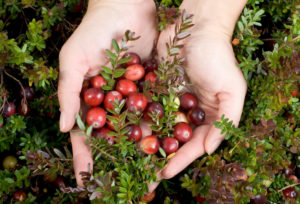Why Cranberries are called The Global Superfruit ? Cranberries are wetland fruits that grow on trailing vines. The vines thrive on the special combination of soils and water properties found in wetlands and are grown in beds layered with sand, peat, and gravel. These beds are commonly known as bogs and were originally formed as a result of glacial deposits. Cranberries are one of the few indigenous North American fruits and were first cultivated by Native Americans who utilized the fruit for both medicine and food. Since then, cranberries have been introduced into cuisines all around the world and have become recognized superfruit thanks to their many health benefits.


A Global Superfruit
Cranberries were once relegated to a holiday U.S. staple, but now stand as a globally recognized superfruit. With research supporting that consuming anti-inflammatory foods, such as cranberries, has been shown to reduce key factors for cardiovascular disease, cancer, and cognitive decline, consumers have increasingly incorporated cranberries into their diets. The fruit can now be found on the plates of many who had previously never tried cranberries. The health benefits that come from consuming cranberries, combined with their versatility, make cranberries a global favourite. Cranberries can be consumed dried as an easy snack, simply drank as a juice, or incorporated into a family recipe. The options are endless with cranberries, and as such, over the last twenty years, global demand has quickly grown. The U.S., as the world’s leading cranberry producer, has expanded to meet that demand and now U.S. cranberries can be found all over the world.
The U.S. Cranberry Industry – Unique and Unparalleled
Cranberries are native to the U.S. and are deeply rooted in American history. In the U.S., there are more than 1,100 cranberry growers – many of them fourth, fifth or even sixth generation. Cranberry bogs can be found all around the nation, but production is concentrated in Wisconsin, Massachusetts, New Jersey, Oregon and Washington. Once a year, from mid-September through early November, all the cranberries in the U.S. are harvested. Cranberries have pockets of air inside the fruit, and because of this, cranberries float in water. During harvest time, bogs are flooded to help remove the fruit from the wines. This process is called wet harvesting and it is the method used to harvest over 90 percent of U.S. cranberries. Wet harvested cranberries are used to make sweetened dried cranberries, juices, sauces, and ingredients in other processed foods. Last year, 3 million barrels of cranberries were sold in stores around the world, including India.
Cranberries in India
India has become a prominent market for U.S. cranberries. In the past five years, Indian imports of U.S. cranberries have increased by nearly 30 percent, and this upward trend is expected to continue. In India, there is growing interest in wellness and healthy eating among consumers. As such, more and more Indian consumers are choosing to eat cranberries for their healthy nutrient-dense profile. Dried cranberries and juices are the most popular among Indian consumers and both are available in metropolitan supermarkets and kiranas. Cranberries are no longer solely an American holiday tradition, cranberries are an everyday, international fruit.











